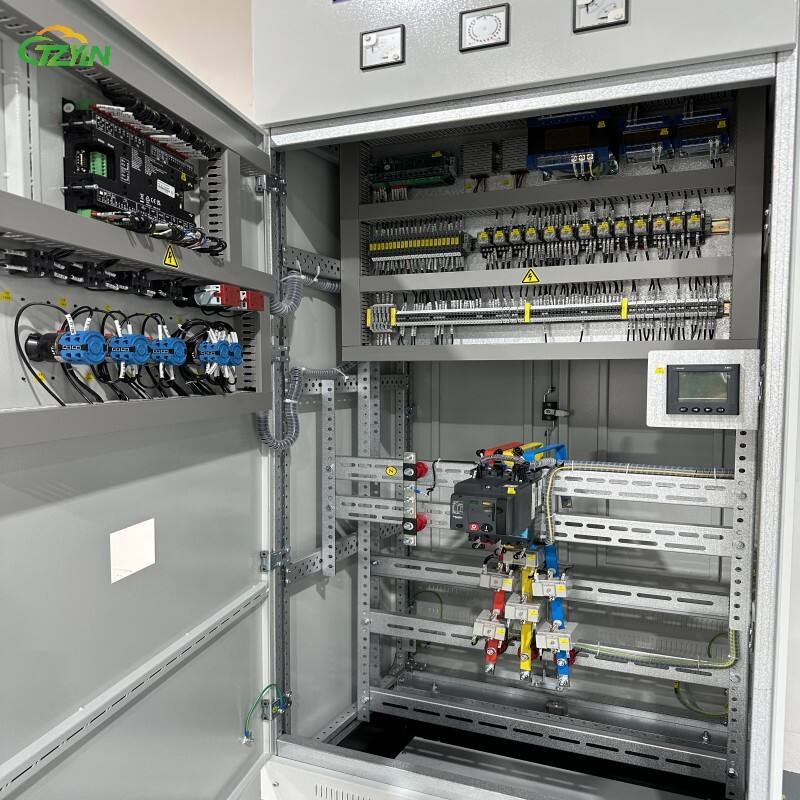Generator Synchronization Panels: Ensuring Seamless Power Transition in Hybrid Systems
In today’s energy landscape, hybrid power systems are becoming increasingly common as businesses and institutions seek stable, reliable, and cost-effective energy solutions. Whether it’s the combination of diesel generators with solar power, or backup generator systems supporting utility grids, maintaining a seamless transition between different power sources is crucial. This is where generator synchronization panels come into play.
Generator synchronization panels are critical in aligning multiple power sources to function as one cohesive system. Their ability to ensure a smooth and safe transition between generators and grid power—or between multiple generators—is essential in environments where power reliability cannot be compromised.
Understanding Generator Synchronization Panels
Generator synchronization panels are specialized electrical control systems that allow two or more power sources to connect in parallel. These panels are designed to match key parameters such as voltage, frequency, and phase angle before allowing generators to synchronize and operate simultaneously.
The core components of generator synchronization panels include synchronizing relays, automatic voltage regulators (AVRs), frequency and voltage meters, PLCs (programmable logic controllers), circuit breakers, and protective devices. Each of these components plays a crucial role in managing the synchronization process, monitoring electrical variables, and protecting the system from overload or malfunction.
When properly configured, generator synchronization panels coordinate power transitions without causing interruptions, voltage drops, or frequency instability. This is particularly important in sensitive applications where even a momentary power loss could have serious consequences.
Synchronization Process and System Behavior
To successfully synchronize a generator to another generator or the grid, several electrical characteristics must align precisely. The generator’s output must match the system it is connecting to in voltage level, frequency, and phase sequence. Any mismatch could result in damage or unsafe operating conditions.
The synchronization process begins with the generator starting and warming up. Once stable, the synchronization panel monitors the generator’s output and uses control mechanisms to adjust speed and voltage. When all values match the system, the panel closes the circuit breaker to connect the generator, ensuring a seamless addition of power without disruption.
Generator synchronization panels also manage the disconnection process. If one generator needs to be taken offline, the panel ensures that the remaining power sources adjust to maintain consistent load sharing.
Benefits of Using Generator Synchronization Panels
The use of generator synchronization panels offers numerous advantages. One of the most significant is the ability to achieve seamless power transition. This ensures that loads are never dropped, even during switchovers between primary and backup power sources.
Another major benefit is efficient load sharing. When multiple generators run in parallel, synchronization panels ensure that each unit shares the electrical load proportionally. This optimizes fuel consumption, reduces wear and tear on each generator, and prevents overloading.
System reliability and operational safety are also greatly enhanced. Generator synchronization panels protect against power fluctuations and provide clear oversight through monitoring interfaces. By managing synchronization automatically, these panels reduce the need for manual intervention and human error.

Key Applications in Hybrid Power Systems
Generator synchronization panels are widely used in various sectors where reliable power is essential. In industrial facilities, they manage transitions between utility power and on-site generators during outages or demand spikes. For hospitals and healthcare centers, synchronization panels ensure critical systems remain online even during unexpected power failures.
Data centers depend heavily on consistent power. Synchronization panels allow diesel backup generators to take over instantly if utility power drops, ensuring data integrity and operational continuity.
In renewable energy hybrid systems—such as those combining solar arrays with diesel generators—generator synchronization panels ensure balanced integration. They allow generators to supplement renewable power when solar output is insufficient, optimizing system performance and reducing reliance on fossil fuels.
Educational institutions, commercial buildings, military installations, and airports also use these panels to maintain secure, flexible power infrastructures.
Factors to Consider When Choosing Synchronization Panels
Selecting the right generator synchronization panel requires attention to several technical and operational factors. First, it’s important to evaluate the number and capacity of generators in the system. The panel must be compatible with the voltage, phase, and frequency characteristics of all connected units.
Next, consider the communication and control features. A modern synchronization panel should support remote monitoring and integration with building management systems. Compatibility with protocols such as Modbus or Ethernet ensures smooth data exchange.
Environmental conditions also influence panel selection. Panels installed in harsh or outdoor environments must have appropriate enclosure ratings (such as NEMA or IP ratings) to protect against moisture, dust, and temperature extremes.
Lastly, the customization options offered by your panel supplier can make a significant difference. Tailoring the panel to match your system’s unique operational needs allows for greater efficiency and simplified maintenance.
Maintenance and Performance Optimization
To keep generator synchronization panels operating at peak performance, regular maintenance is essential. Visual inspections, testing of relays and circuit breakers, calibration of meters, and software updates should be scheduled routinely. Preventive maintenance helps identify potential issues before they cause costly downtime or damage.
Many modern synchronization panels include built-in diagnostic tools and support for remote monitoring. These features enable operators to oversee panel performance in real time, receive alerts for faults, and track system trends for predictive maintenance.
Frequently Asked Questions (FAQ)
What is the primary function of a generator synchronization panel?
It ensures multiple power sources, such as generators and the grid, operate in parallel with matched voltage, frequency, and phase, enabling smooth power transitions.
Can synchronization panels be used with renewable energy systems?
Yes, especially in hybrid setups combining solar or wind energy with diesel generators, synchronization panels help manage load balancing and transition.
Are generator synchronization panels suitable for small facilities?
Absolutely. They can be scaled for both small and large systems, offering reliable control for any application requiring coordinated power sources.
How often should synchronization panels be serviced?
Routine maintenance every 6–12 months is recommended, along with real-time monitoring for prompt issue detection.
Do synchronization panels require manual operation?
Modern systems are typically automated, though most panels include manual override options for flexibility in control and emergencies.
Table of Contents
- Generator Synchronization Panels: Ensuring Seamless Power Transition in Hybrid Systems
- Benefits of Using Generator Synchronization Panels
- Factors to Consider When Choosing Synchronization Panels
- Maintenance and Performance Optimization
-
Frequently Asked Questions (FAQ)
- What is the primary function of a generator synchronization panel?
- Can synchronization panels be used with renewable energy systems?
- Are generator synchronization panels suitable for small facilities?
- How often should synchronization panels be serviced?
- Do synchronization panels require manual operation?


